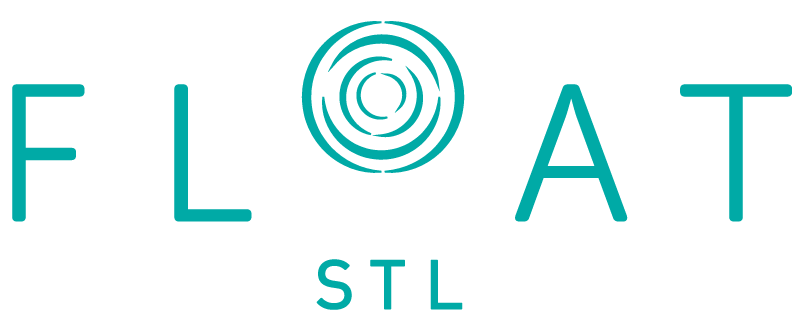Many athletes and recreational exercisers are familiar with the healing benefits of Epsom Salt (magnesium sulfate). If you’ve ever had an injury or a serious case of post-workout soreness, it’s not uncommon to hear your chiropractor, friend, or family member say, “take a warm Epsom Salt bath” for relaxation and physical recovery. Would it surprise you to learn that floating for 90 minutes in our float tank solution of 200 gallons of warm water and 1000 pounds of Epsom Salt offers some fantastic benefits for your athletic side? If you’re curious, read on!
Whether you compete athletically or simply enjoy working out, running, or playing a recreational sport, floating can help you decrease your soreness and fatigue, prevent injury, and improve your overall performance.
In this blog post, we will provide information about post-workout soreness, fatigue, and injury prevention. We’ll also offer a few tips to use floating to improve your athletic performance in general!
Decrease Soreness, Fatigue, and Injury Prevention
If you were to pick up Michael Hutchinson’s, The Book of Floating and skip to chapter 19, you would read about runner-neurophysiologist-researcher Jeffrey Gmelch of Columbia University. Gmelch states that lactic acid, a by-product of anaerobic exercise, builds up in our bodies after a run and causes uncomfortable muscle fatigue and soreness. Many of us have heard about lactic acid – it’s that stuff that, after exercising, makes us feel so sore it hurts to walk!
As a runner who loves running but does not want to deal with soreness, cramping, lower-back pain, and injury (can’t blame him!), Gmelch decided to informally experiment with floating after his runs. He noticed, when he floated after a run, he could run with greater ease, he felt little-to-no back pain, he felt an improvement in stamina and endurance, and he didn’t experience the usual muscle cramping that would typically force him to interrupt his run. On the other hand, when he withheld floating after a run, he noticed that he continued to experience post-run stress, like cramping in his shoulders, pain in his back, shin splints, and a general sense of the run feeling difficult as opposed to relaxed.
Gmelch has a hypothesis about what he believes is happening. He believes that floating helps our bodies produce less lactic acid and helps to speed the clearing of lactic acid from our bodies. While he has not produced hard data to these effects, his ideas make sense to us.
We have a few runners and lifting enthusiasts on staff here at FLOAT STL, and we all swear that floating supports our post-workout recovery and helps us bounce back from injuries.
Tips to Improve Performance in General
Follow these tips to use floating to improve your athletic performance:
Do your own exercise and floating experiment: You know what it feels like to push yourself physically, do a little stretching, and feel how you feel the following days, right? Well, see what it feels like to schedule a float after your workout. Be curious. Ask yourself, how does my body feel after a run-and-float versus a run-and-relax? Do I have my regular aches and pains? How does my back feel? How does my next run-or-workout feel? Let us know what you learn!
In the tank, practice guided imagery and mental rehearsal: when you float, visualize yourself in your sport. In your mind’s eye, watch yourself move. Feel your body. Feel yourself hit your stride. Feel yourself hit that sweet spot. Feel yourself hit a flow state. As you visualize, see if any areas of your body seem hot, rigid, tight, or injured. This can help you bring attention to the parts of your body that may need extra care and attention. If your attention wanders, see if you can bring it back to your inner rehearsal. Dallas Cowboy placekicker Rafael Septein attests to the positive effects of using mental rehearsal, guided imagery, and visualizing in the tank. Hutchinson writes, Septein “believes his daily floats are the key to his success.”
In the tank, practice healing visualization: when you float, visualize healing white light radiate through your body. As you breathe in, let it flow into every area where you have ever experienced injury, tightness, and soreness. When you breathe out, let those tight-sore-or-injured spots leave your body. Let them go, knowing that they are burdens that no longer need to be attached to your muscles or skeleton. Imagine that the healing white light is re-aligning your spine in the way that is perfect for you. Envision this light, streaming through your whole body, soothing anything that needs soothing, and filling every cell of your body with rejuvenation, health, and healing.
We hope you have enjoyed learning more about how floating can support your athletic performance! If you experiment with any of our tips, let us know how it goes. We’re always trying to update our understanding of the ways that a float practice supports and helps you!
** The content from this blog post was informed by the wonderful book: The Book of Floating – exploring the private sea, by Michael Hutchinson. If you would like read a more in-depth explanation about the ways that floating can improve your athletic performance, please resource this book. We have a few copies for your enjoyment in our pre/post float area, and a stack of books for sale if you want to take one home. It’s easy to read, easy to digest, and offers lots of helpful information!
Extra Special Notes About Floating and Athletic Performance
Recently, we attended the 2017 Portland Float Conference, where we witnessed several researchers present their research on floating and athletic performance. Below, I will list several links to interviews that Float On held with these fantastic people. We hope you enjoy!
Click here to listen to Ashkahn Jahromi of Float On speak to Lydia Caldwell and Josh Hagan about their float tank research for the STRONG (Signature Tracking for Optimized Nutrition and Training) lab.
Click here to listen to Ashkahn Jahromi of Float On speak to Bob Mangine about bringing floating to the athletics department at the University of Cincinnati.
Click here to listen to Ashkahn Jahromi of Float On speak to David Vorbora about integrating floating into his Adaptive Training Program.


